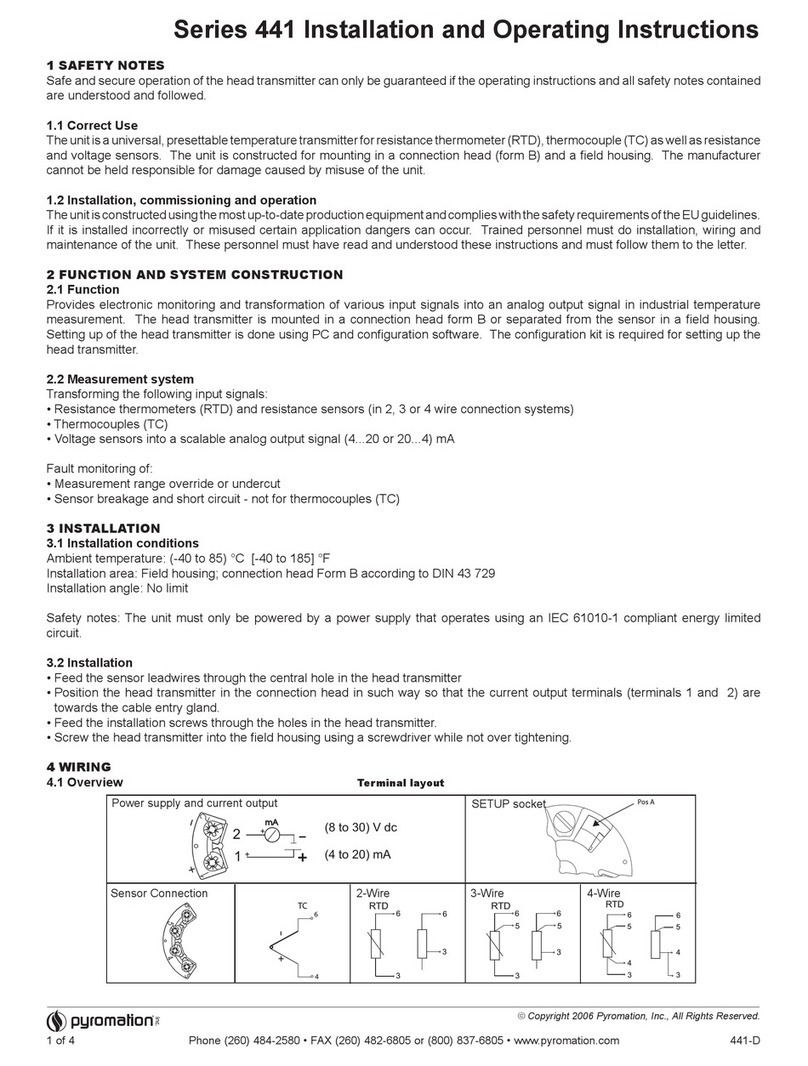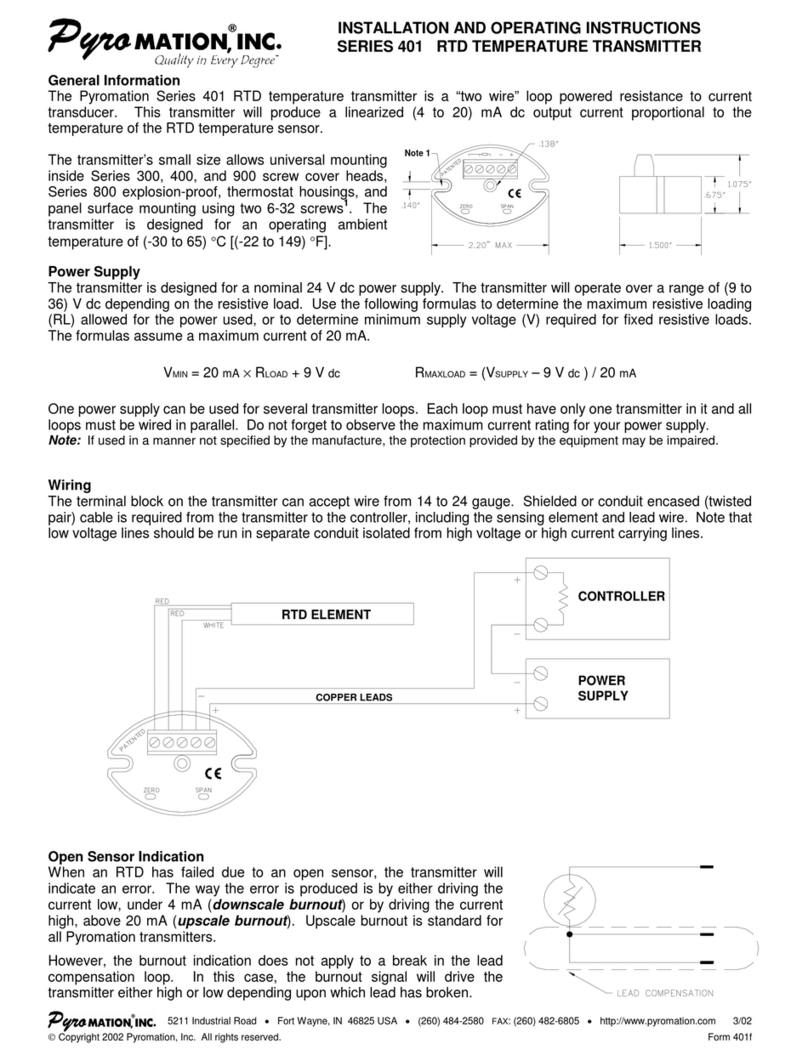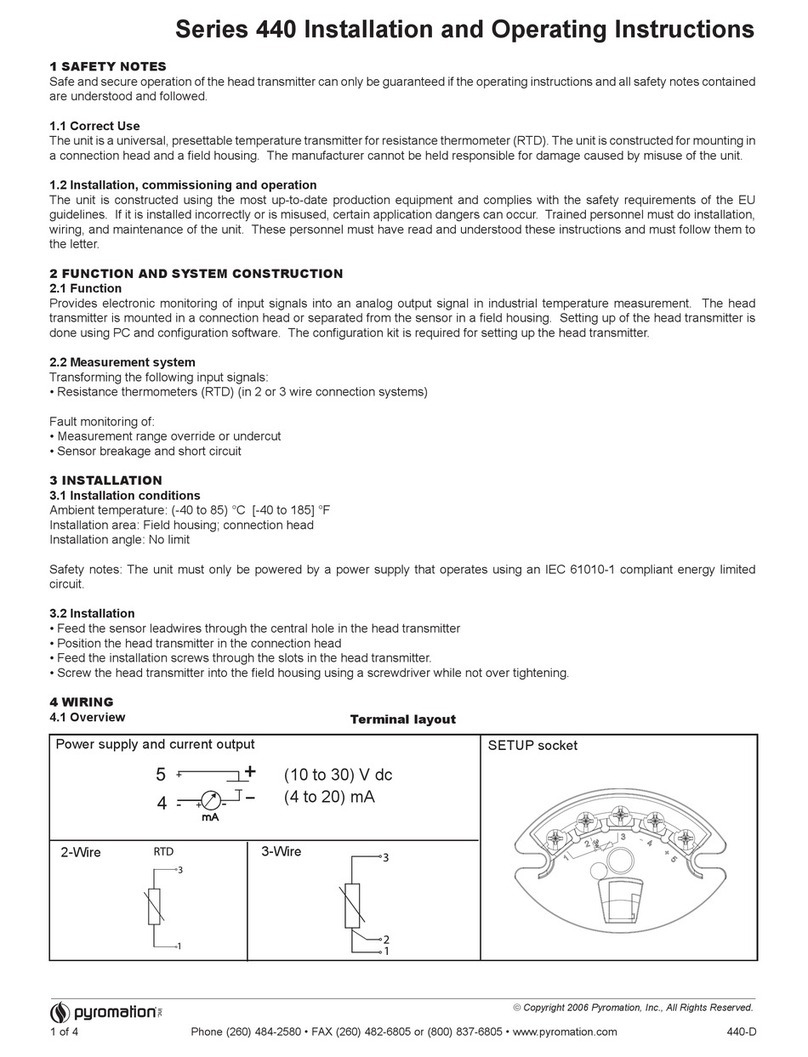
Copyright 2006 Pyromation, Inc., All rights reserved.
1 of 11 Phone (260) 484-2580 •FAX (260) 482-6805 or (800) 837-6805 •www.pyromation.com 442-D
Series 442 Installation and Operating Instructions
1 SAFETY NOTES
Safe and secure operation of the head transmitter can only be guaranteed if the operating instructions and all safety notes
contained are, understood, and followed.
1.1 Correct Use
The unit is a universal, presettable temperature transmitter for resistance thermometer (RTD), thermocouple (TC) as well as
resistance and voltage sensors. The unit is constructed for mounting in a connection head (form B) and field housing. The
manufacturer cannot be held responsible for damage caused by misuse of the unit.
Separate Ex (hazardous area) documentation is attached with this operating manual as drawing M006601, for measurement
systems in hazardous areas. The installation conditions and connection values indicated in these instructions must be followed!
1.2 Installation and operation
The unit is constructed using the most up-to-date production equipment and complies with the safety requirements of the EU
guidelines. If it is installed incorrectly or is misused then certain application dangers can occur. Trained personnel must do
installation, wiring and maintenance of the unit. These personnel must have read and understood these instructions and must
follow them to the letter.
1.3 Operational safety - Hazardous areas
When installing the unit in a hazardous area the national safety requirements must be met. Make sure that all personnel are
trained in these areas. The measurement and safety rules must be followed in all these installations.
2 FUNCTION AND SYSTEM CONSTRUCTION
2.1 Function
Electronic monitoring and transformation of various input signals into an analog output signal in industrial temperature
measurement. The head transmitter is mounted in a connection head (form B) or separated from the sensor in a field housing.
Setting up of the head transmitter is done using a “HARTCommunicator DXR 275” or PC and configuration software.
2.2 Measurement system
Transforming the following input signals:
•Resistance thermometers (RTD) and resistance sensors (in 2, 3 or 4 wire connection systems)
•Thermocouples (TC)
•Voltage sensors into a scalable analog output signal (4…20 or 20…4) mA
Fault monitoring of:
•Measurement range override or undercut
•Sensor breakage and short circuit - not for thermocouples (TC)
3 INSTALLATION
3.1 Installation conditions
Ambient temperature: (-40 to 85) °C [-40 to 185] °F (For hazardous areas, see drawing M006601)
Installation area: Field housing; connection head Form B according to DIN 43 729
Installation angle: No limit
Safety notes: The unit must only be powered by a power supply that operates using an IEC 61010-1 compliant energy limited
circuit.
3.2 Installation
•Feed the sensor leadwires through the central hole in the head transmitter
•Position the head transmitter in the connection head in such way so that the current output terminals (terminals 1 and 2) are
towards the cable entry gland.
•Feed the mounting screws (M4 x 20 mm long for form B heads) through the holes in the head transmitter.
•Screw the head transmitter into the field housing using a screwdriver while not over tightening.






























